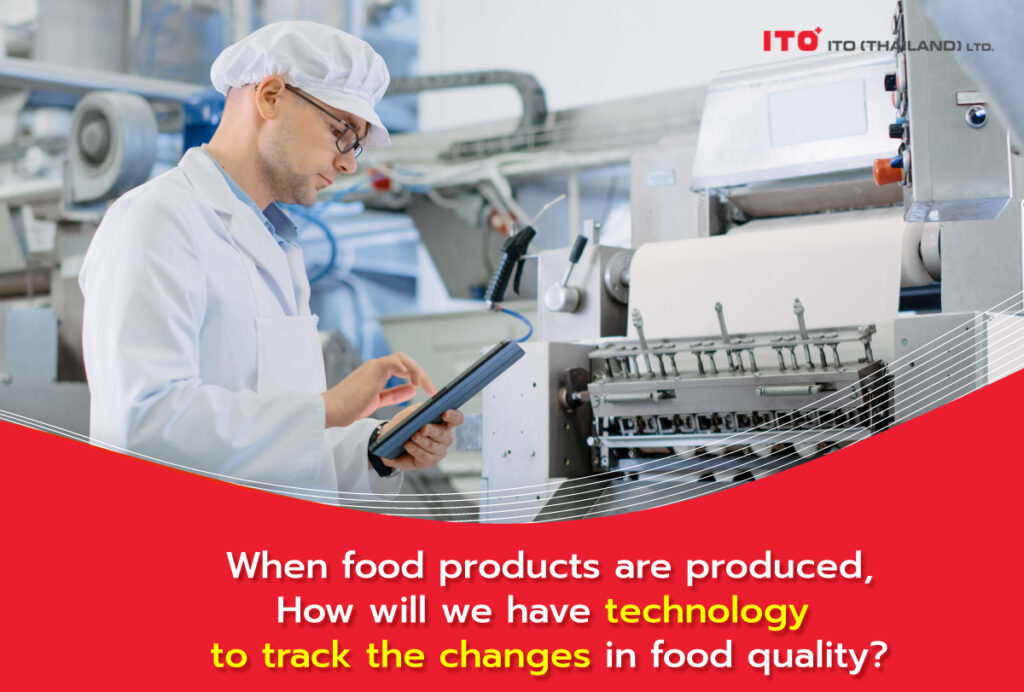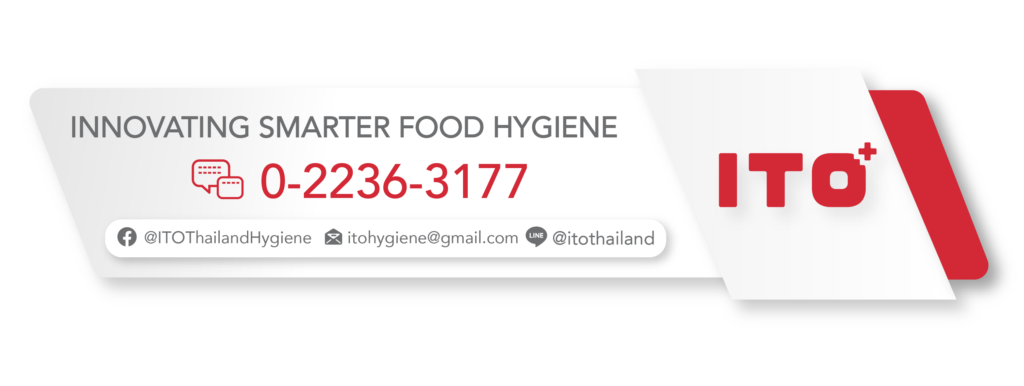ITO Thailand Hygiene Blog
Food Safety/Quality Monitoring Technology
When food products are manufactured, quality (e.g. color, odor, flavor, texture, deliciousness) and safety (e.g., pathogenic microorganisms, toxin generation) shall determine the shelf life of the food. Food that is harvested or produced under the same production batch will be specified the same shelf life according to the nature of that food. But actually, the changes in food depend on the environment in which the food is stored such as temperature, humidity, light, oxygen, etc. Therefore, food produced under the same production batch may have different deterioration rates according to the nature of storage. Or even in the production process itself If heating has an uneven distribution, the quality of the food may vary since the moment it is produced. For general quality monitoring apart from observing with naked eyes, food samples must be randomized for analysis of quality and safety, that cannot be observed with naked eyes, of which process has to destroy the samples; for example, to measure the acidity, alkalinity, texture, viscosity and ripeness. This process is time consuming; for instance, curing for testing microorganisms. As a result, there are a lot of efforts to develop various technologies for quality and safety inspections without destroying the samples and to immediately show the results in real-time.
•Linking observable external textural properties with quality
→For instance, Color Imaging technology to link the color on the fruit skin or outer skin with the quality of the fruit or to predict the fat distribution in meat by measuring the textural spectra of the slice of meat by Hyperspectral Imaging Technology, etc.
•Color indicators
→Use the principle of changing food quality that cannot be seen by naked eyes to be able to communicate with the visible system. Mostly, color changes are done by chemical reactions or diffusion of pigments can be divided into several types as follows:
•Specific substance indicators
→The measuring plate contains a substance that reacts with a specific substance and changes the color upon contacting with that specific substance at a specified concentration. The measuring plate must be installed in the product package in order to detect the substance in the head-space of the package and the specific substance of interest must be in a gaseous state. For example, the Freshness indicator indicates the freshness of the product by detecting metabolites produced by enzymatic degradation reactions within the food itself or by external microorganisms such as carbon dioxide derived from growth of microorganisms or respiration of vegetables and fruits, volatile nitrogen derived from protein degradation, sulfide substances derived from Pseudomonas bacteria, etc. (1), Ripeness indicator indicates the shelf life of vegetables and fruits from volatile substances released by vegetables and fruits during ripening such as aldehydes producing fruit ripen odor and ethylene gas released, etc.(1) , Fermentation indicator; for instance, the measurement of carbon dioxide during kimchi fermentation process(2) and Leakage indicator measure the gas leaking into the airtight packaging(3) , etc.
•Critical temperature indicator
→Apply to temperature sensitive products such as frozen food by using the changeover principle of the barrier between two colorless substances inside the measuring plate that can react with each other to form a colored substance. If the product is stored in extreme temperature condition above the specified critical temperature, the barrier inside the measuring plate will change its state into liquid causing the substances on both sides to react with each other to form an observable color(4)
•Time-temperature indicator
→Use to indicate the time-temperature history how long the food has exposed to which degrees of high and low temperatures and how they affect the food quality or safety. There may be change of several color variations indicating different quality by using the principle that the deterioration reaction in food occurs at the same rate as the color reaction (relatively close reaction time) and the temperature also affects the change of reaction rate in food almost the same time as that of the measuring plate. Simple example; for instance, putting cooked level indicator of a boiled egg along with the egg to be boiled, then the indicator will change the color according to each cooked level of the boiled egg. For industrial aspect, this may be used in the manufacturing processes involving temperature changes that affect the quality and safety of food such as the cooked level of food by steaming(5) , the inconsistent water evaporation rate in drying(6) , microbial sterilization by heat(7) , etc., or in the preservation process of temperature sensitive food such as fresh food, chilled food and frozen food.
•Sensor and Smart Monitoring System
→Presently, due to technology has been greatly developed, the use of color change to communicate the level of food quality and safety to humans has been developed to collect data on factors affecting food quality and safety with sensors, such as sensors to measure temperature, humidity, light and gas in conjunction with collecting data on food characteristics such as ingredients, pH, concentration of substances, structural characteristics, porosity, etc. resulting to quality and safety changes to create software that uses these data to solve the problems and to develop such as predicting changes in food quality and safety throughout the supply chain, being able to immediately alert the abnormalities at production site, finding the bottleneck in production, improving work process, reducing the quantity of inferior products, managing stocks based on actual product quality, linking data to improve production efficiency, helping the planning of product production and distribution, assisting in the design and maintenance of equipment, tools, machinery, etc.
References
1.Shao, P., Liu, L., Yu, J., Lin, Y., Gao, H., Chen, H., & Sun, P. (2021). An overview of intelligent freshness indicator packaging for food quality and safety monitoring. Trends in Food Science & Technology, 118, 285-296.
2.Hong, S. I., & Park, W. S. (2000). Use of color indicators as an active packaging system for evaluating kimchi fermentation. Journal of Food Engineering, 46(1), 67-72.
3.Ahari, H., & Soufiani, S. P. (2021). Smart and Active Food Packaging: Insights in Novel Food Packaging. Frontiers in Microbiology, 12.
4.Boonsupthip, W., Heldman, D. R., & Choachamnan, J. (2015). Quality monitoring and management during storage and distribution of frozen vegetables. Handbook of vegetable preservation and processing, 349-376.
5.Choachamnan, J., & Boonsupthip, W. (2019). Glucose‐fructose‐glycine time–temperature integrator and its potential application in heating process control of food softness. Journal of Food Process Engineering, 42(8), e13287.
6.Uddin, Z., & Boonsupthip, W. (2019). Development and characterization of a new nonenzymatic colored time–temperature indicator. Journal of Food Process Engineering, 42(4), e13027.
7.Van Loey, A., Haentjens, T., Smout, C., & Hendrickx, M. (1999). Enzymic time–temperature integrators for the quantification of thermal processes in terms of food safety. Processing foods: quality optimization and process assessment, 13-40.
Related Post
-

Biodegradable Packaging
As straightforward as its name, it means any packaging that will naturally fall apart and decompose. In recent years, biodegradable packaging has been included as one of the sustainable development goals for several organisations. A similar issue, bioplastics, an alternative to sustainable living, was discussed in a previous blog. However, there are some differences between them. For example, bioplastics are made from raw materials sourced from renewable and natural sources and could or could not be biodegradable. In contrast, biodegradable plastic can naturally degrade through living organisms no matter the source material it originates from. The development history of biodegradable packaging, frequently used materials, the pros and cons of biodegradable packaging, and its future trends will be discussed in this blog.
-

Precision Agriculture
Precision agriculture has revolutionised how we approach crop management by optimising the inputs to meet specific requirements. Even though it is not a new system, recent technologies have made it possible to apply it in practical productions. In this blog, we will discuss the definition of precision agriculture, its pros and cons, and future trends.
-

Vertical Farming
Agriculture has utilised nearly all the available land, causing growing difficulty in finding land on the earth’s surface. With limited resources, meeting the world’s food demands will require more innovative and dependable methods of producing safe food, and the answer lies in vertical farming.
-
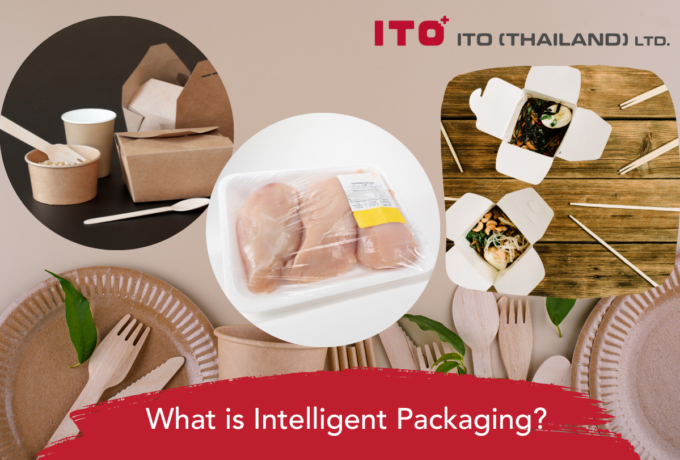
Intelligent Packaging
Without packaging, food products would last for only a short period of time, impossible for logistics management, difficulties in the supply chain system, quick quality deterioration, and prone to contamination to risky foodborne pathogens. In reality, there are many more functions that packaging is contributing to food products, as well as many types of smart packaging. Intelligent packaging is considered to be a part of smart packaging, so in this blog, we will discuss the contribution of intelligent packaging to food products.
-
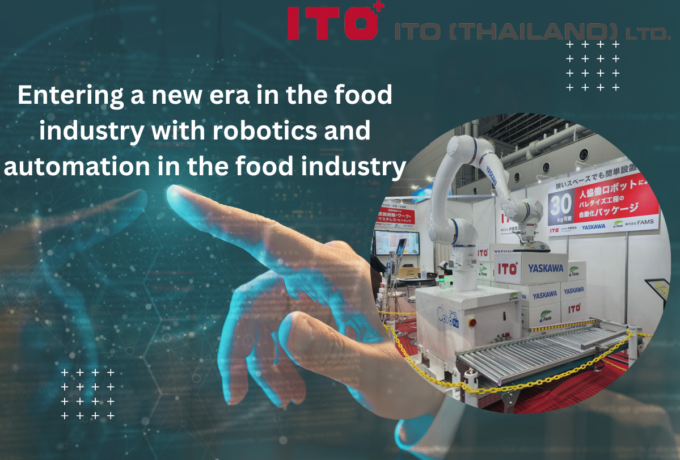
Robots & automation in the food industry
Entering a new era in the food industry with robotics and automation in the food industry
-
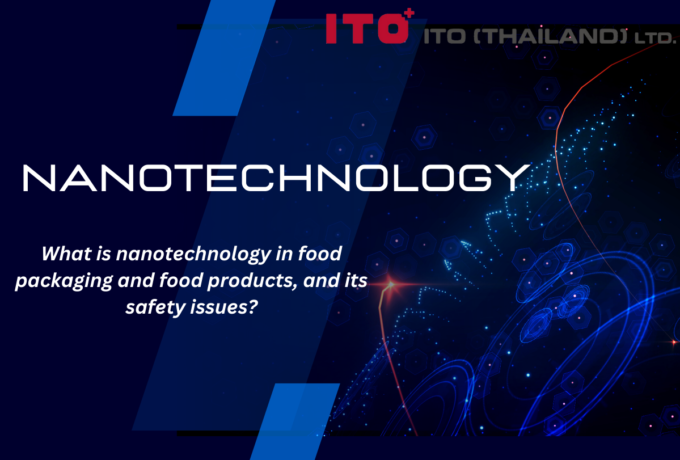
Nanotechnology in the Food Industry
Nanotechnology has been brought to our attention for the last decades, and it has provided various beneficial applications to the food industry. Unlike other technology, nanotechnology has broadened the knowledge in the food industry to another level in a nanoscale dimension. It involves almost every aspect of the food industry, including food packaging, food processing, as well as functional food development and enhancement of food safety. In this blog, we will discuss how nanotechnology is used in food packaging and food products, and the most important part, its safety issues.








